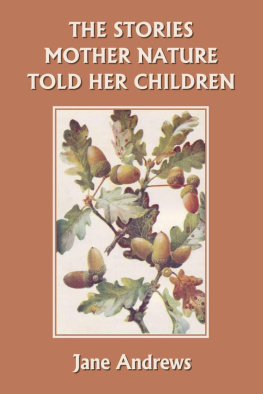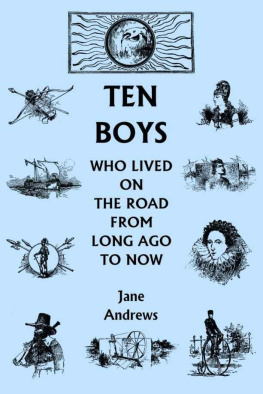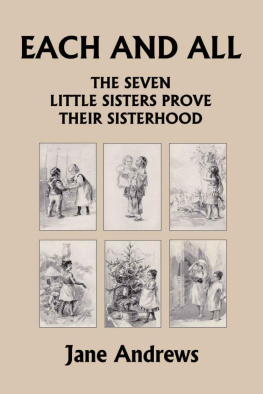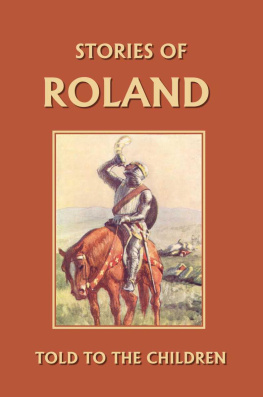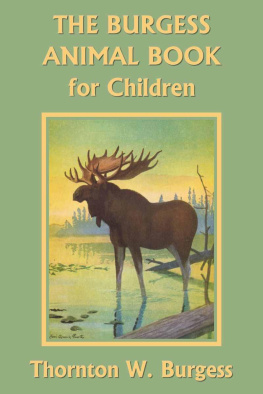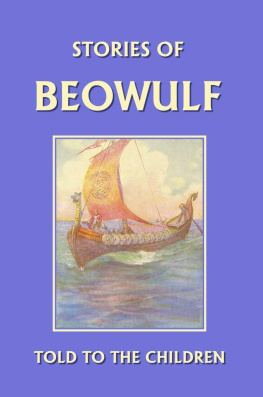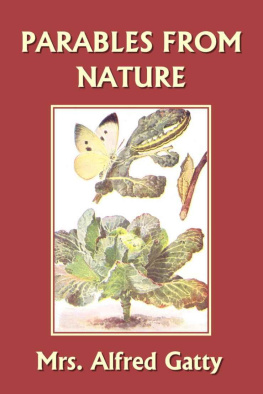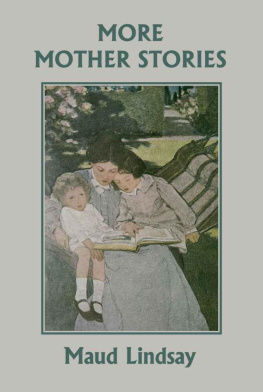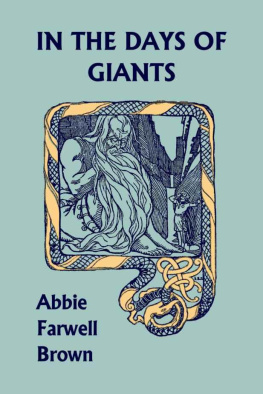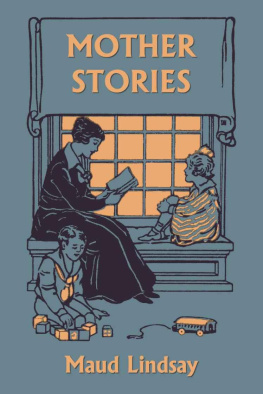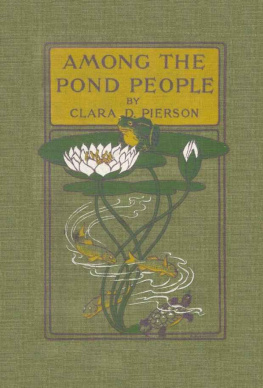The Stories Mother Nature Told Her Children
by
Jane Andrews
Yesterday's Classics
Chapel Hill, North Carolina
Cover and Arrangement 2010 Yesterday's Classics, LLC
All rights reserved. No part of this book may be reproduced or retransmitted in any form or by any means without the written permission of the publisher.
This edition, first published in 2010 by Yesterday's Classics, an imprint of Yesterday's Classics, LLC, is an unabridged republication of the work originally published by Ginn & Company in 1888. This title is available in a print edition (ISBN 978-1-59915-063-5).
Yesterday's Classics, LLC
PO Box 3418
Chapel Hill, NC 27515
Yesterday's Classics
Yesterday's Classics republishes classic books for children from the golden age of children's literature, the era from 1880 to 1920. Many of our titles are offered in high-quality paperback editions, with text cast in modern easy-to-read type for today's readers. The illustrations from the original volumes are included except in those few cases where the quality of the original images is too low to make their reproduction feasible. Unless specified otherwise, color illustrations in the original volumes are rendered in black and white in our print editions.
Sketch of Jane Andrews
BY MARGARET ANDREWS ALLEN
Reprinted from the "Kindergarten Magazine."
In the little Wisconsin town of Wilton, on Arbor Day, the children, in making their selection of names for the trees they planted, chose these three: "Washington, Longfellow, and Jane Andrews,"names which must have embodied for them some real personality, and thus secured their affection and loyalty. Last autumn a class of children in Portland, Ore., met at the house of their teacher, for a "Jane Andrews afternoon," to talk about this friend of theirs, and her books, making her one of themselves for those pleasant hours. And yet none of these personsteacher or pupilshad ever seen Miss Andrews, and it was only through her books that she had become a real person to them. This has made me think that some account of my sister, and how these books came into being, might interest her many friends all over the country, who know her merely through the children of her thought.
Through all her life, my sister had a great fondness for children, and a power of winning their confidence and love. But she had never thought of putting into writing the stories with which she often fascinated them, till in 1860, after intimate association with the children in her little school (in our old home at Newburyport, Mass.), "the stories grew of themselves," as she said. These stories appeared in 1862, under the title of "The Seven Little Sisters who Live on a Round Ball that Floats in the Air." This was soon followed by "Each and All," carrying on the story of the "Seven Sisters."
I have always thought that we people who grow up on the seacoast feel our connection with all the nations of the world, the unity of races, more as a matter of instinct and circumstance than of reason.
The middle sea contains no crimson dulse;
Its deeper waves cast up no pearls to view.
Along the shore my hand is on its pulse,
And I converse with many a shipwrecked crew.
To add to this natural tendency from position, was the fact that our ancestry on one side belonged to the merchant marine of New England; and many a tale of their adventures by sea and land, in strange countries and among strange people, were the fireside entertainment with which our mother beguiled the long winter evenings, while the distinct sound of the sea lent reality to the tale. And to her stories were added our father's rich store of old Scottish and English legends and ballads, and the stories of old New England, of which he had an endless store. Thus we grew up with a wide interest and a realization of things beyond our sight. The great outside world was peopled for us with real beings, not the dim shades which many children glean from second-class geographies. In after years, looking back on these stories of our childhood, we understood that only that which is endowed with life and reality is capable of interesting a child and bearing a vital part in his education. We learned, also, how the bent and interests of one's life are always influenced, and often determined, by the education of early years.
When my sister graduated from the Normal School at West Newton, Mass. (now the Framingham Normal School), she first put into writing, in her valedictory, her ideas on the teaching of geography,the same ideas which she afterwards carried out in teaching the children of her little school, and in the writing of "The Seven Little Sisters," which grew out of that teaching. In this she was led, as all true lovers of children are, by the thoughts of the children themselves stimulating her thought and enabling her to give her "Seven Sisters" a real personality. To many a child, "The Brown Baby" is just as real as her own baby sister in the cradle by her side; and many a child with her sled longs for Agoonack's brisk little dogs, and looks with added interest at the dogs in the Eskimo Village at the World's Fair, or the seal in the zoological gardens at Philadelphia, because they are old friends of hers through these stories.
In a report of an entertainment given some years ago at the Perkins Institute for the Blind, we find that even there the "Seven Sisters" have found their way. I will quote the account as it appeared in Boston Transcript at the time:
"While Mr. Hawkes was speaking, the little kindergartners had been diligently modeling in clay; and when he had ceased they gave an exercise called 'The Seven Sisters.' The first tiny creature showed a round ball, and told us that it was a large ball that could float through space, and had men and trees on it; in short, it was the earth, which contained the homes of the 'Seven Sisters.' The next child told of the little dark sister who lived in a warm country and ate cocoanuts, and she showed a cocoanut. The next child told of the Eskimo sister who dwelt in a hut, and exhibited a clay hut. The fourth one described the life of an Arab and her country, and had a successful model of an ostrich. Then a little girl told of the Swiss maiden who dwells high on the Alps, and of her brother the wood carver, and held up a bowl and spoon which were like the little Swiss girl's. The sixth girl showed some chopsticks with which the little Chinese girl eats, and the seventh told a very pretty story of the African sister, who wears bracelets and anklets of gold. The last of the 'Seven Sisters' was the German maiden who lives on the Rhine. Then the sixth girl explained that though the 'Seven Sisters' lived on different parts of the globe, they were all under the loving care of one Father."
Quite a number of these stories grew out of real events. The story of "Louise, the Child of the Rhine," had its rise in the account a German emigrant gave my sister of his early life of hardship not far from Chicago, after happy days of prosperity near the Rhine. In "Each and All," sequel to the "Seven Sisters," Agoonack's wonderful voyage on the ice island is modeled after the real adventures of the crew of the Polaris . The little figures of clay, in "Christmas Time for Louise" ("Each and All"), were really modeled by some little children in Kansas, when a circle of educated people tried to bring something beside the toil and privations of pioneer life into their children's lives. The spirit of all this is brought out in the story of Louise.
Geographical plays grew naturally out of her work in the little school which she carried on in our house for many years, and each play was enthusiastically acted by her school children.

